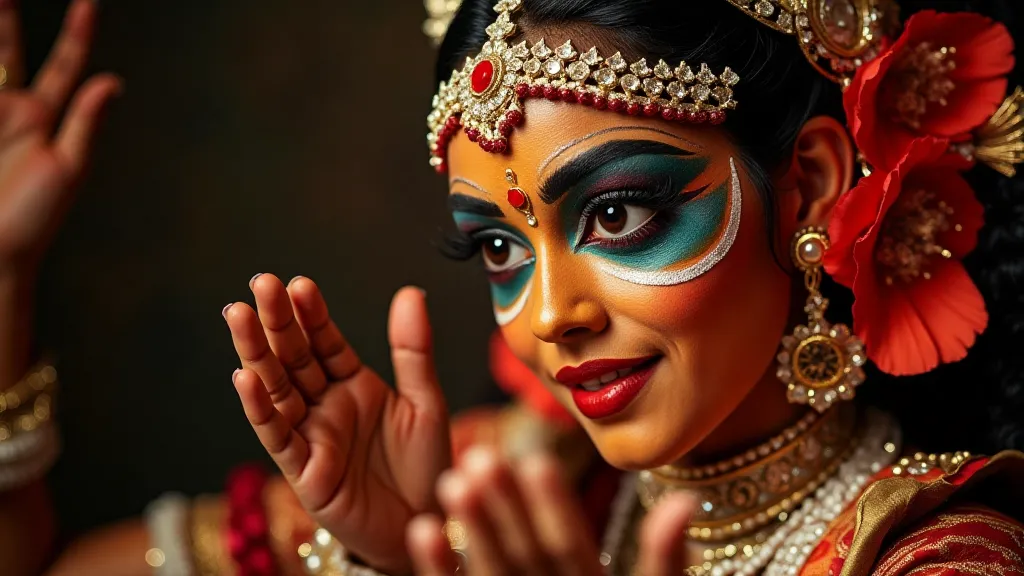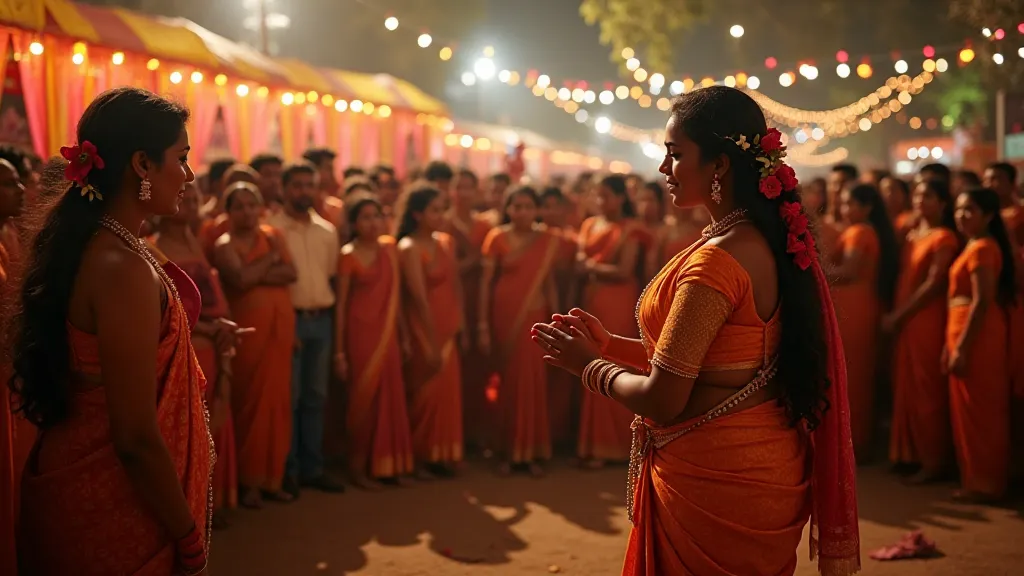Storytelling in Kerala, India: Kathakali and Ancient Myths
Kerala, a state on India's Malabar Coast, boasts a rich tapestry of cultural heritage, and at the heart of this heritage lies a vibrant tradition of storytelling. Passed down through generations, these oral traditions are deeply intertwined with Hindu mythology, ritualistic practices, and performance arts, shaping the identity and worldview of the Keralite people. This article delves into the captivating storytelling traditions of Kerala, focusing particularly on the classical dance-drama form of Kathakali and the ancient myths that fuel its narratives. Storytelling isn’t unique to Kerala, of course; across the globe, cultures rely on narrative to convey history, morals, and beliefs. The ways these stories are preserved and performed vary greatly, as we see in traditions like the lore of the Australian Outback, which similarly weaves narratives with profound cultural significance.
The Foundation: Hindu Mythology and Folklore
Kerala’s storytelling traditions are inextricably linked to Hindu mythology. Stories of the epics – the Ramayana, the Mahabharata, and the Puranas – form the bedrock of much of Kerala’s folklore. These narratives are not merely recounted; they are reinterpreted, localized, and adapted to reflect the specific cultural nuances of the region. Gods and goddesses like Rama, Krishna, Shiva, and Parvati are prominent figures, their adventures and interactions woven into the fabric of everyday life. Local deities and spirits are also frequently incorporated, blending the pan-Indian mythological framework with regional beliefs. The cyclical nature of these myths and their enduring relevance is a recurring theme found in storytelling traditions worldwide – consider how Japanese folklore, for instance, uses similar frameworks in tales of Yokai and Samurai, passing down important lessons and cultural values through generations. The richness of these narratives speaks to the human need for meaning and connection, something explored in cultures from Japan to the Caribbean.

Kathakali: A Living Narrative
Perhaps the most iconic manifestation of Kerala’s storytelling traditions is Kathakali. This classical dance-drama form is a spectacular blend of elaborate costumes, intricate makeup, expressive gestures (mudras), and rhythmic music. Kathakali performances are not simply narratives; they are immersive experiences that engage all the senses. The dancers, trained from a young age, embody mythological characters, enacting scenes from the epics with remarkable skill and intensity.
The mudras, or hand gestures, are crucial to Kathakali’s storytelling. Each gesture has a specific meaning, conveying emotions, actions, and even entire phrases. The elaborate makeup, which uses vibrant colors to distinguish between characters – white for righteous heroes, green for noble characters, red for villains – further enhances the storytelling. The vocal music, often accompanied by percussion instruments like the chenda, adds to the drama and intensity of the performance.
Analyzing the Symbolism
The symbolism within Kathakali and the associated storytelling is profound. The color red, for example, is consistently associated with the power of Ravana, the antagonist in the Ramayana. The white makeup of Rama signifies purity and righteousness. The use of specific costumes and headgear signifies a character's status and personality. The narratives themselves often convey moral lessons and reinforce cultural values. The stories explore themes of dharma (righteousness), karma (action and consequence), and the eternal battle between good and evil. Understanding the underlying symbolism and contextual significance often requires deep cultural understanding. This kind of symbolic depth is also evident in other narrative traditions. The careful use of symbolism and metaphor to impart deeper meaning also resonates with the storytelling found in the folktales of the Caribbean, where Anansi the Spider and other figures carry layers of meaning beyond their surface appearances.
Beyond the surface narrative, Kathakali also incorporates elements of tantric traditions, with specific rituals and practices performed to cleanse the performers and invoke the blessings of the deities. This deeper spiritual dimension adds another layer of meaning to the storytelling experience. The intricate rituals and spiritual practices interwoven with Kathakali performances highlight the powerful connection between art, religion, and community – a relationship that is fundamental to many cultures worldwide.
The Preservation of Oral Traditions
While Kathakali represents a formal, codified form of Kerala's storytelling, oral traditions continue to thrive in various communities. They are passed down through families and local storytellers, often performed during festivals and ceremonies. These stories often incorporate local legends, folktales, and humorous anecdotes, providing a rich and accessible way to connect with cultural heritage. Efforts are being made to document and preserve these endangered oral traditions through recordings, interviews, and storytelling workshops. The oral tradition itself is a crucial element, ensuring stories aren’t lost to time. Consider that, much like Kathakali, these oral narratives frequently involve stylized performances and formalized methods of conveying stories, ensuring their lasting impact.

The Influence of History and Colonialism
Kerala's storytelling traditions haven't existed in a vacuum. Like many cultures globally, the region's narratives have been shaped by historical events and, significantly, by colonial influences. While the core mythological narratives persist, subtle shifts in character portrayals, themes, and even the ways stories are told reflect the complexities of Kerala’s past interactions with different civilizations. The way power dynamics are explored within the stories, for instance, often provides a unique perspective on historical events and social hierarchies. These nuances in storytelling reveal the ways in which cultures adapt and reinterpret narratives to make sense of the world around them.
Kathakali’s Global Resonance and Future
The impact of Kathakali extends far beyond the borders of Kerala. Performances have captivated audiences worldwide, serving as a powerful ambassador for Indian culture. However, ensuring its survival for future generations requires continued effort. Promoting Kathakali education in schools, supporting local artists, and encouraging innovation within the tradition are all vital steps. The ability of Kathakali to evolve and adapt while retaining its essence is key to its longevity. Much like other cherished traditions around the globe, it faces the ongoing challenge of balancing preservation and innovation.
Comparing and Contrasting Storytelling Traditions
Kerala’s storytelling is but one thread in the rich tapestry of global narratives. When compared to other traditions, common themes and unique characteristics emerge. For example, while the folktales of Japan and Kerala both rely heavily on mythology and use symbolic characters to convey moral lessons, the Japanese tradition often incorporates elements of Shintoism and Buddhism that are distinct from the Hindu influences in Kerala. Similarly, the dreamtime stories of Aboriginal Australians, described in the lore of the Australian Outback, explore themes of creation and connection to the land, offering a different perspective on the relationship between humans and the natural world.

Conclusion
Storytelling in Kerala is more than just a pastime; it's a living, breathing tradition that shapes the cultural identity of the region. From the grand spectacle of Kathakali to the intimate sharing of folktales, these narratives offer a window into the rich tapestry of Kerala’s history, mythology, and values. Preserving these traditions is essential for ensuring that future generations continue to connect with their heritage and appreciate the power of storytelling. The endurance of these stories speaks to the fundamental human need for connection, meaning, and shared experience - a truth universally acknowledged across cultures and generations.





